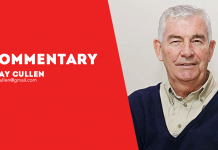By ROMEO F. QUIJANO, M.D.
VACCINATION is probably the most deceptive tool of imperialism that even anti-imperialists often fail to recognize. It displays a humanitarian face but has the soul of a beast. Its true character is that of a deceptive agent of imperialism.
The romanticism of western medicine has masked the true nature and ethos of vaccination. However, using the anti-imperialist tool, pedagogy of the oppressed, a diligent and deeper study of the history of vaccination and the socio-political and cultural context of that history would reveal the true character of vaccination.
Vaccination is the process of introducing a vaccine into the body to produce immunity to a specific infectious organism. It is not the same as immunization (which has been mistakenly used interchangeably with vaccination), which is the process of conferring immunity, not necessarily through vaccination. Immunity is the capacity of the body to protect itself from the development of a disease due to exposure to an infectious organism.
Imperialism is usually defined as expansion of economic activities, especially investment, sales, extraction of raw materials, and use of labor to produce commodities and services beyond national boundaries, as well as the social, political, and economic effects of this expansion.
I would define Imperialism as: Intervention of Monopolistic Power Exploiting the Resources of Impoverished Areas Leading to Increased Social Misery (I-M-P-E-R-I-A-L-I-S-M).
If we look carefully into the history of vaccination, we will find that the development of vaccination coincided with the development of imperialism. Medicine and public health have played important roles in imperialism.
With the emergence of the United States as an imperial power in the early twentieth century, interlinkages between imperialism, the business elite, public health, and health institutions were forged through several key mediating institutions. Philanthropic organizations sought to use public health initiatives to address several challenges faced by expanding capitalist enterprises: labor productivity, safety for investors and managers, and the costs of care.
In the early 1900s, the capitalist magnate Rockefeller already had a hand in the development of smallpox vaccine. Rockefeller’s pioneering virologist Tom Rivers (1888-1962) undertook to develop a safer vaccine by growing the virus in tissue culture.
The result was an attenuated strain of virus that was better than the earlier vaccines produced in England. It was the first vaccine used in humans to be grown in tissue culture.
Rivers’ interaction with Rockefeller Foundation scientists, who were then working to make a yellow fever vaccine in Foundation laboratories on the Rockefeller Institute campus, influenced Max Theiler to create an attenuated virus vaccine. Theiler later won a Nobel Prize for this work.
Parke-Davis also was a pioneer in vaccine production. The company set up shop in 1907 in Rochester hills, Michigan, pitching a circus tent to house horses and constructing a vaccine-propagating building, a sterilizing room and a water tank.
Parke-Davis was once America’s oldest and largest drug maker. It was acquired by Warner Lambert company in 1970, which in turn was acquired in 2000 by Pfizer, which is now the largest pharmaceutical company in the world.
Pfizer claims that it was involved in the commercial production of a smallpox vaccine in the early 1900s, that it was the first to develop a heat-stable, freeze-dried smallpox vaccine as well as the bifurcated needle, the first to introduce a combined vaccine for preventing diphtheria, pertussis and tetanus and had produced more than 600 million doses of the first live trivalent oral poliovirus vaccine.
These medical advances coincided with the emergence of what has been called “New Imperialism” when European states established vast empires mainly in Africa, Asia and the Middle East and almost at the same period, the United States colonized the Philippines, Guam, Puerto Rico, Kingdom of Hawaii, American Samoa, Northern Mariana Islands, and for short periods, Haiti, Dominican Republic, Nicaragua and Cuba. (To be continued)
***
The author is a retired professor of the Department of Pharmacology and Toxicology at the College of Medicine, University of the Philippines-Manila (Bulatlat.com)

